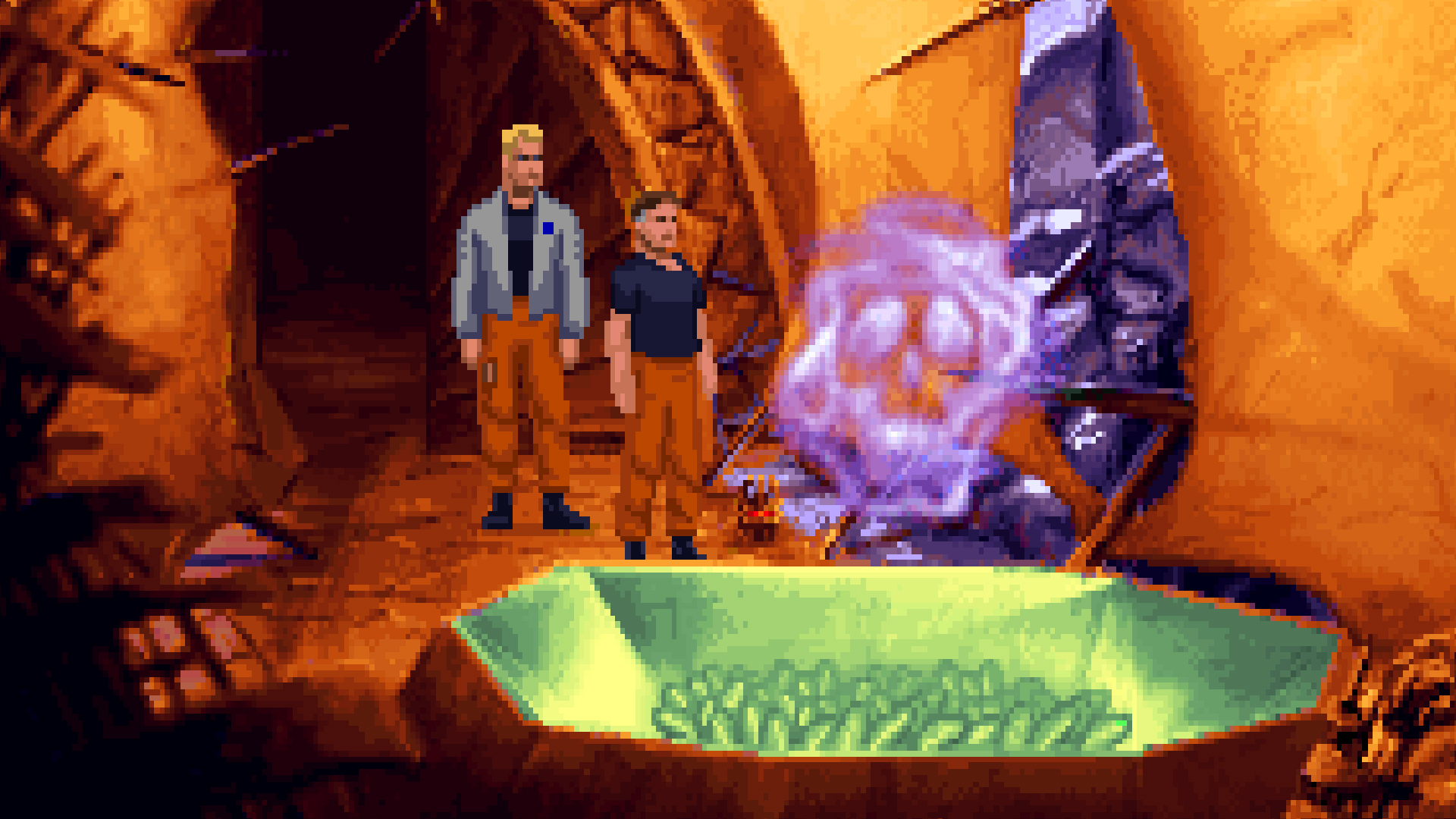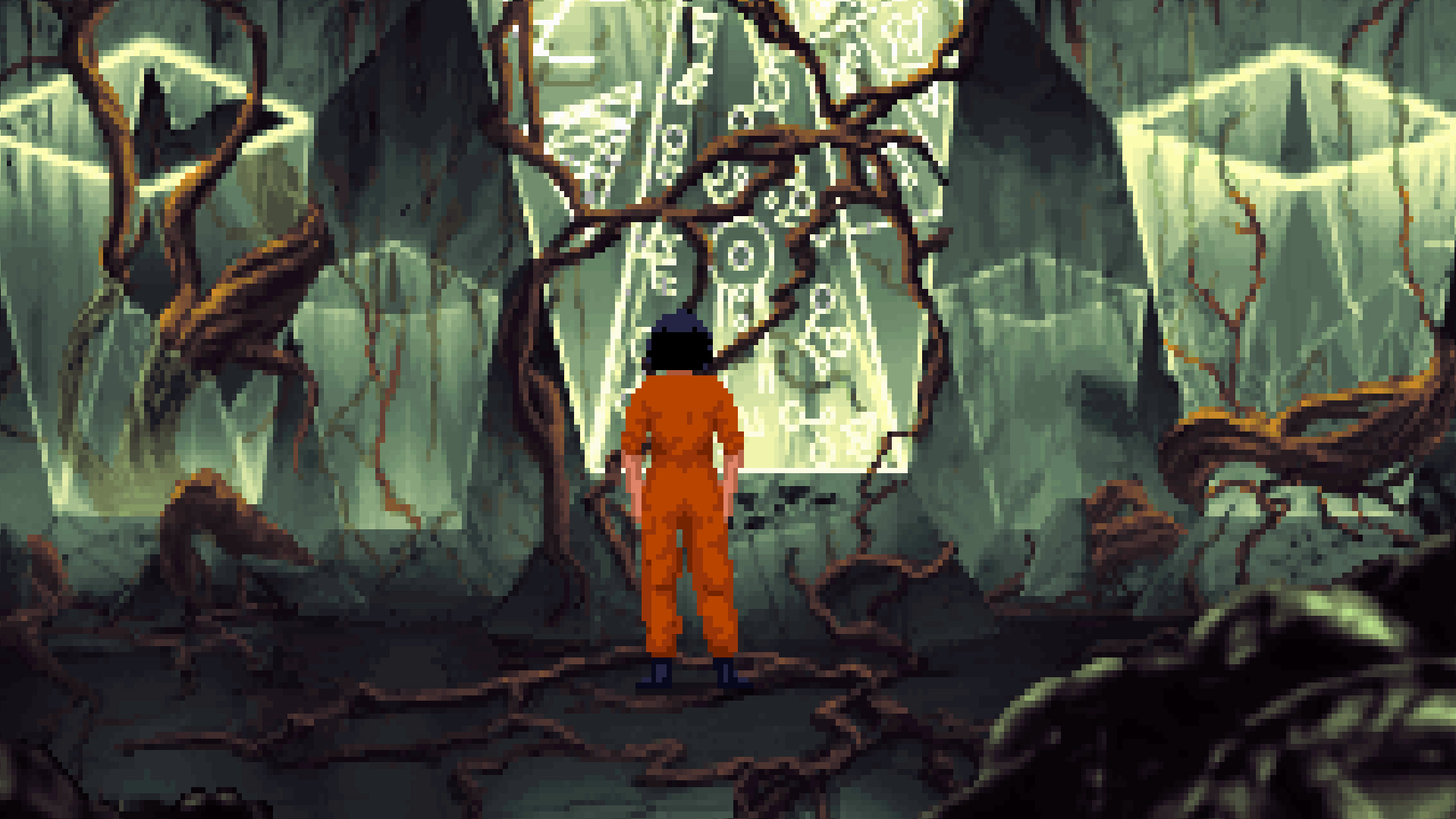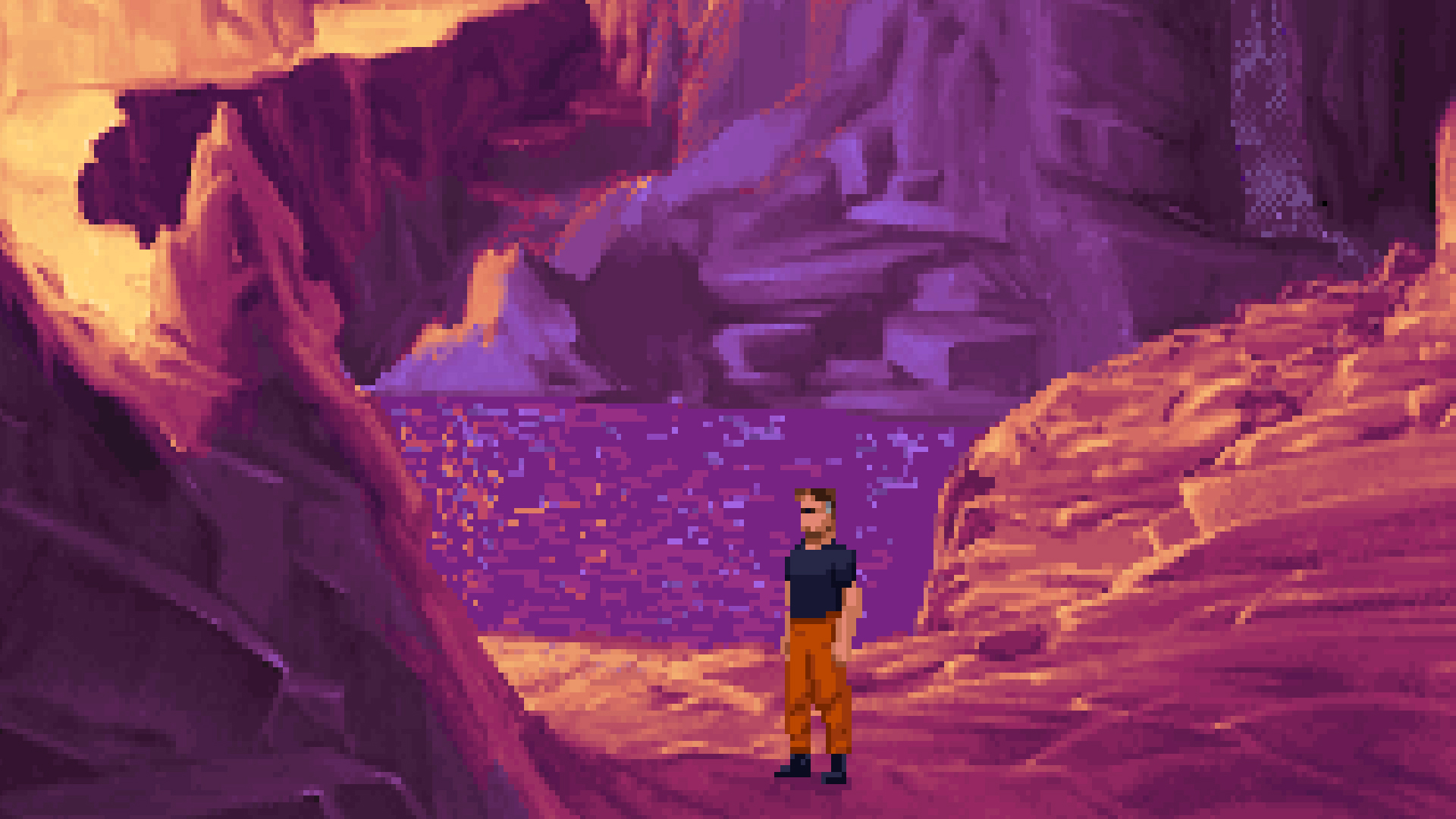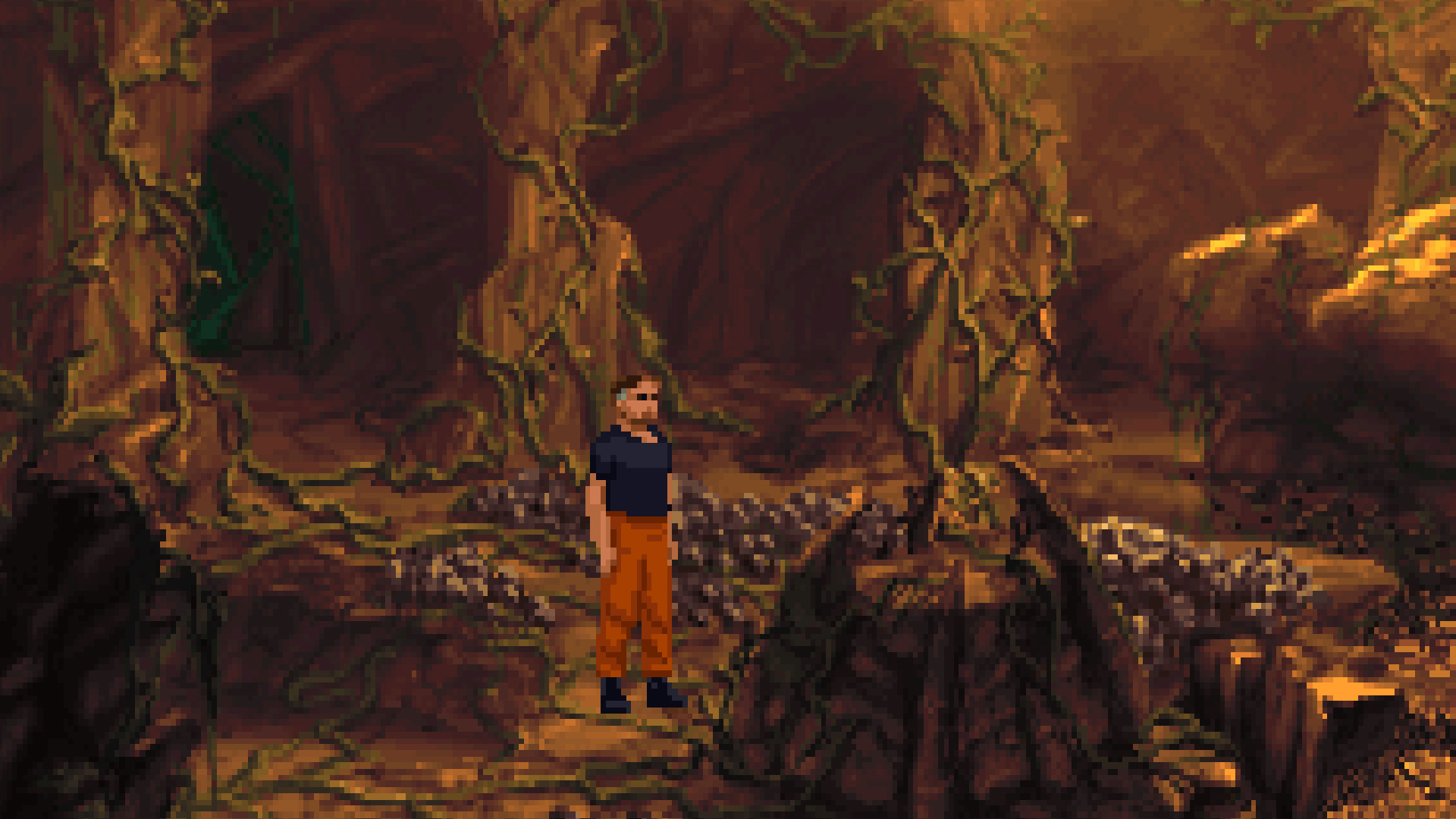The Dig is a weird LucasArts adventure dreamed up by Steven Spielberg
Revisiting the cult '90s sci-fi epic.
Watch a video version of this article above.
The story of The Dig begins in 1989 with Steven Spielberg. While working on Amazing Stories—a science fiction anthology TV series he created for NBC—he dreamed up an ambitious yarn about an archaeological dig on an alien planet. Realising a television budget couldn’t do it justice, he put his idea on ice.
Then Spielberg found a way to bring his story to life, with a little help from his old pal George Lucas. Monkey Island creator Ron Gilbert and industry veteran Noah Falstein had developed an adventure game based on Indiana Jones and the Last Crusade for LucasArts, and Spielberg—an avid gamer—was impressed.
A meeting was set up at the Skywalker Ranch between Spielberg, Lucas, Gilbert and Falstein. Ideas were thrown around, and the concept for what would become The Dig gradually began to take shape. Spielberg envisioned the game as a cross between Forbidden Planet and The Treasure of the Sierra Madre. Indiana Jones in space.

In the years to follow, The Dig would suffer a prolonged and troubled development. Falstein eventually left the project, and Loom creator Brian Moriarty took the helm. The game was originally going to have RPG elements, such as locating food and water to stay alive, but ended up as a traditional point-andclick adventure.
Over time the characters, story, and locations would change dramatically, but the fundamentals of Spielberg’s idea remained intact: archaeologists uncovering the remains of an ancient alien civilisation on another world, and then—under the influence of what they find there—turning on each other.
The Dig was finally released in 1995, with Robert Patrick (Terminator 2, The X-Files) voicing the lead role. Reviews were mixed at the time, but the game has since become something of a cult classic. It’ll never be as fondly remembered as Full Throttle or Sam & Max, but it’s one of the most interesting and unusual games LucasArts ever made.
The biggest gaming news, reviews and hardware deals
Keep up to date with the most important stories and the best deals, as picked by the PC Gamer team.
It opens with a radio telescope detecting a deadly asteroid heading for Earth. The governments of the world devise a plan to knock the rock off course with a series of nuclear explosions. Michael Bay would use the same premise just three years later in his apocalyptic cheese-fest Armageddon.

A pre-mission press conference introduces us to the game’s stars: commander Boston Low, journalist Maggie Robbins, and scientist Ludger Brink. While other LucasArts adventures boast large, colourful casts, the majority of The Dig is spent in the company of these three and their conflicting personalities.
Robbins is uptight and combative. Brink is pompous and self-regarding. Low is practical and easygoing. From the earliest scenes you can sense the tension in their dynamic, and it only gets worse as the game goes on and their situation grows more dire. The natural-sounding banter and confident acting are among the game’s strongest points.
The planet is never named, but a novelisation by Alan Dean Foster calls it Cocytus: the lowest circle of Hell in Dante's Inferno.
The mission goes to plan, but there’s more to the asteroid than meets the eye. It’s actually an alien spacecraft, and whisks Low and his team to another planet, light years away. Getting home becomes their next priority, and this is where the game proper begins. The planet is never named, but a novelisation by Alan Dean Foster calls it Cocytus: the lowest circle of Hell in Dante’s Inferno.
That’s a dramatic name for what is actually quite a peaceful setting. Whoever lived on this barren world has long since gone, leaving behind strange ruins. The Dig is a slow, understated game that’s more Solaris than Star Wars. There are a few moments of action, including a run-in with a giant alien spider, but mostly you’re just wandering around, solving puzzles, and poking through the ruins looking for a way home.

Let’s talk about puzzles. They are, by far, the worst thing about the game. LucasArts puzzles are obscure at the best of times, but here they’re oblique to the point of farce. While shrinking a sweater in a dryer for 200 years to thaw out a frozen hamster in Day of the Tentacle was ludicrous, it was at least tethered (loosely) to real-world logic. The Dig is a confusing morass of orbs, crystals and weird alien machinery that will have all but the most patient adventurers reaching for a walkthrough.
It gives you the feeling of being an archaeologist, deciphering the enigmatic culture of a lost alien civilisation. But it’s also pretty boring. It’s the story, atmosphere, and characters that make The Dig worth revisiting. The central mystery grabs you the moment you land, and it’s intoxicating. It was the desire to find out more about it that got me through the worst of the puzzles.
Spielberg’s love of The Treasure of the Sierra Madre inspires one of the game’s biggest dramatic hooks. In the movie a gold discovery makes Humphrey Bogart’s character crazy and paranoid. In the game it’s a cache of crystals that can raise the dead, and it’s the geologist, Brink, who loses his mind. After being revived by them, he becomes erratic and illogical, behaving like a drug addict.

Like so many ambitious science fiction stories, The Dig falls apart at the end. All of the planet’s mysteries are explained in a single conversation, and it becomes a lot less interesting as a result. It’s the mystery that makes the game compelling, and losing it left me feeling slightly empty. It’s not that the big reveal is bad—just that not knowing is always more evocative than knowing.
The Dig scored 87% in our original review, but that was a long time ago. Time has not been kind to it. The background art, music and atmosphere have held up, but the pointing and clicking has not. Yet despite its flaws, I enjoyed replaying it. If Monkey Island was LucasArts’ summer blockbuster, this was their experimental art house movie, and I’m glad Spielberg chose a videogame as the medium to tell this fascinating story.
If it’s set in space, Andy will probably write about it. He loves sci-fi, adventure games, taking screenshots, Twin Peaks, weird sims, Alien: Isolation, and anything with a good story.


